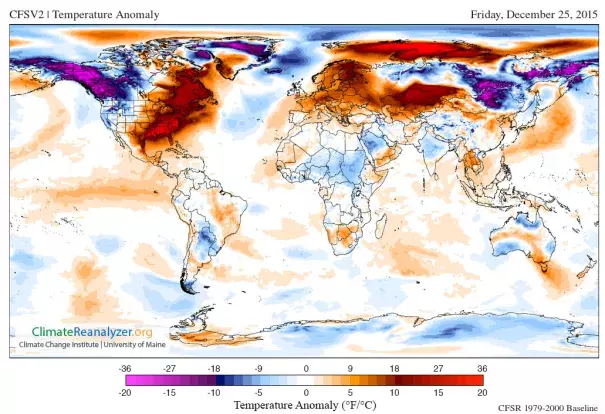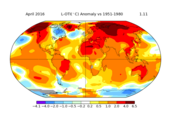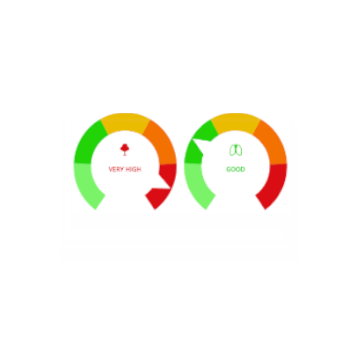The how and why behind a record-breaking Christmas heatwave

According to NOAA's National Centers for Environmental Information , 789 daily high temperature records were tied or broken on Christmas Eve and Christmas Day in the continental United States...
To get perspective on what caused the Christmas warmth, I spoke with two new faces on the Lamont campus who are experts on climate variability and extreme weather events: Deepti Singh, a postdoctoral fellow at the Lamont-Doherty Earth Observatory, and Justin Mankin, an Earth Institute postdoctoral fellow. Although my question was simple—why was it so warm?—their responses illuminated the challenge of assigning causality to any extreme weather event...
"Around Christmas, we had record warm temperatures related to an unusual weather pattern affecting large parts of central and eastern North America. By itself, this unusual weather pattern is part of the natural climate variability associated with phenomena like El Niño."
But there are strong indications that more than just El Niño is at play.
"Though we typically expect warmer than average winters in the eastern United States during large El Niño events, this El Niño has set temperature records across the globe in 2015," added Singh. "The fact is that the climate has warmed, the magnitude of wintertime maximum temperatures has increased, hot extremes have become more frequent, and cold extremes have become less frequent. All these observations point to an increased likelihood of unusually warm days like Christmas in today's climate."
Mankin agreed. "On the one hand, it's impossible to say that this Christmas event would not have happened in the absence of climate change, because it probably could have. On the other, this Christmas warmth happened within the context of a number of unusually warm East Coast Decembers (save for the last two years). Warmer winters are certainly something we expect to happen with climate change."
Sleuthing extreme events requires "balancing the idea of the event being entirely congruent with our picture of human-caused climate change, and yet potentially entirely expected in the absence of human-caused climate change. When thinking about why these events occur, you need to keep both these ideas in mind."
Related Content




